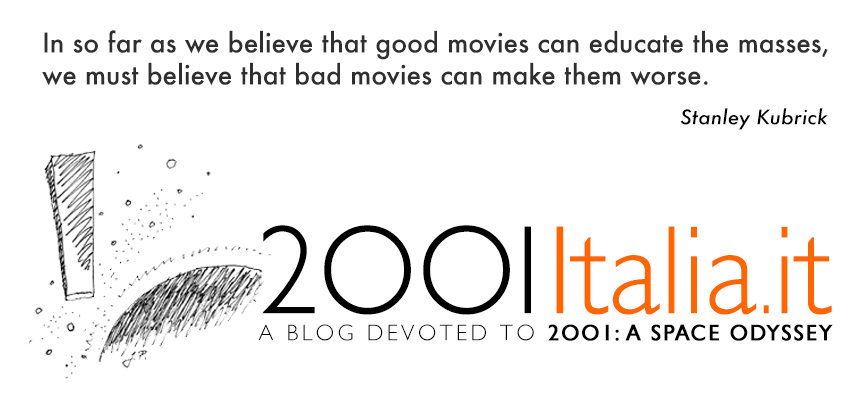To my knowledge, the full text of the letter was first published on the internet in 2012 by the fine site Letters of Note, although an excerpt was already present in Taschen's 2008 book The Stanley Kubrick Archives and was published in the same year in the Daily Telegraph website). Here it is:
SOLARIS PRODUCTIONS, INC
March 31, 1964
Mr. Arthur C. Clarke
[Address redacted]
Dear Mr Clarke:
It's a very interesting coincidence that our mutual friend Caras mentioned you in a conversation we were having about a Questar telescope. I had been a great admirer of your books for quite a time and had always wanted to discuss with you the possibility of doing the proverbial "really good" science-fiction movie.
My main interest lies along these broad areas, naturally assuming great plot and character:
Roger tells me you are planning to come to New York this summer. Do you have an inflexible schedule? If not, would you consider coming sooner with a view to a meeting, the purpose of which would be to determine whether an idea might exist or arise which could sufficiently interest both of us enough to want to collaborate on a screenplay?
- The reasons for believing in the existence of intelligent extra-terrestrial life.
- The impact (and perhaps even lack of impact in some quarters) such discovery would have on Earth in the near future.
- A space probe with a landing and exploration of the Moon and Mars.
Incidentally, "Sky & Telescope" advertise a number of scopes. If one has the room for a medium size scope on a pedestal, say the size of a camera tripod, is there any particular model in a class by itself, as the Questar is for small portable scopes?
Best regards,
(Signed)
Stanley Kubrick
When I first read the letter, I was amazed, but not surprised, to find yet another example of Kubrick's uncanny ability to exploit every chance to extract information from his interlocutor, whether he was a close friend, a relative, an acquaintance, or a total unknown.
The telescope thing was not a pretext to arouse the interest of Clarke: Kubrick was a hobbist astronomer but most of all he was a total 'geek' - he bought every new gadget he could, owned several tape recorders, and when computers came around he was an enthusiast early adopter.
Therefore when, after asking the well-respected author to consider a possible collaboration for a science-fiction movie, the director takes the opportunity to ask him about his latest gadget as well, we are almost led to believe that the movie was an excuse!
What was Clarke's reaction to Kubrick's letter? The sci-fi author was aware of the director's interest (he had already answered to Roger Caras' telegram, as we saw in my previous post), and, as we read in his biography Odyssey,
the letter further aroused Clarke's interest in the project. [...] "Kubrick is obviously an astonishing man", he wrote to Caras. [...] "By a fortunate coincidence, I was due in New York almost immediately, to complete work on the Time-Life Science's Library Man in Space". [...] Before the trip (Clarke) searched through his published fiction for ideas that could be used in the film.What he came up with, a short story wrote for a 1948 BBC contest that did not win or even place - The Sentinel (here it is as a pdf)- somehow set the tone for the whole project (despite the enormous differences between it and the final movie, compared by the same Clarke to the differences between an acorn to a full-grown oak tree).
Cover and first page of The Sentinel in its first published version, in the english magazine 10 Story Fantasy in 1951, under the title "Sentinel of Eternity". Source: ebay
Arthur C Clarke with a Questar telescope, Sri Lanka, 1970s. Source: tipsimages.com
Kubrick's Questar telescope will feature again in the 2001 story, in a purported UFO sighting event that the director and Clarke experienced while developing the plot for the movie, in the same year 1964. We'll deal about that in a future article.






L-g~~60_3.JPG)




















